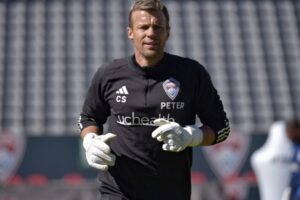Editorial (June 17, 2019) – College Soccer has decreased in relevancy to MLS and professional soccer in America gradually over this century. It might not be as significant as it once was, but will continue to produce players with MLS potential in spurts. In that, it still has a role to play in the American Soccer landscape.
College Soccer Will Still Have Relevance in Professional American Soccer
A decade ago, MLS teams looked to build most of their roster with college soccer players. As recently as 2010, the United States Men’s National Team roster was stocked with players who played four years in college soccer.
With development academies producing younger and better Homegrown players have decreased the room and value of the 22-year-old college player. Foreign players getting green cards so as not to take up international roster slots have allowed teams to sign additional foreign players.
Then add in the Generation Adidas program that has led to several talented players leaving college early. This has led further to the reduction of four-year college soccer players in MLS.
Nowadays, most MLS SuperDraft picks don’t even get contract offers. Outside of the top 10 picks in the first round (if that), most see little to no playing time their rookie seasons.
That said, some MLS academy players are still choosing to attend college before turning professional. And every year, there’s a handful of players who make it. MLS teams might not be able to make an MLS Cup contender with 20+ four-year college players. But they can still find a Corey Baird or Jordan Harvey.
That said, college soccer will need to evolve for a number of reasons.
“The people who say that college soccer can’t develop players are just wrong. We need to look ourselves and see if we can get the academic year model in place for Division 1 Men’s Soccer that would span over the fall and the spring,” University of Denver Pioneers Head Coach Jaime Franks told Last Word last season.
A proper season spread over the two semesters with more time between games would do the sport good. It would allow for more games and in better conditions for the athletes. The NCAA could do this and still allow for the summer off for the student athletes to play in the PDL, take a summer class, etc.
This will allow for the better development of the players. That doesn’t attack the reality that most of talent is being diverted away from college soccer. The top high school players in America with real professional potential aren’t choosing which university to attend.
Chances are, they were scouted and picked up by an academy before they started high school. A select few may already be getting interest from Europe. They’ve got options besides college. More direct options. That said, as good as the academies at New York Red Bulls and FC Dallas are, they don’t have the university infrastructure built in. That’s something some players will still value.
“Unless the academy has education, I can’t foresee a kid giving up his entire life to go pro when his education is in front of him,” said Franks.
College soccer still has a role to play in MLS and certainly the lower divisions. Some changes are needed for better development of players. In certain circumstances, talented players will still choose to go to school for various reasons.
Can college soccer provide what those players need to succeed on and off the field at a level that warrants that commitment over turning professional? Can the system improve so as to develop a less sought after player and turn a USL reserve player into something more? Can college soccer continue to find players that fall through the cracks of professional scouting?
These are the questions college soccer must answer to remain relevant in the modern game.






